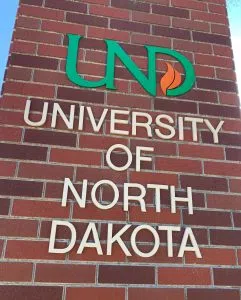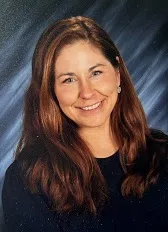North Dakota
North Dakota Wheat Commission Weekly Wheat Update for April 16, 2024

Spring wheat planting is underway across the U.S.
According to this week’s USDA/NASS Crop Progress Report, Minnesota, Montana, and North Dakota, wheat crops are all about 2-3% planted. (Photo: Getty Images, Unsplash)
MANDAN, N.D. — Planting of the 2024 U.S. spring wheat crop has begun. Spring wheat planting progress in the U.S. is 7% complete. According to this week’s USDA/NASS Crop Progress Report, Minnesota, Montana and North Dakota are all about 2-3% planted, while South Dakota is at 23%. All of these values are very similar to the five-year average and ahead of last year’s pace.
The majority of the spring wheat region saw well below normal snowfall over the winter and warmer than normal temperatures which have allowed for a slightly earlier start to planting compared to last year. Temperatures the first half of April have been above average, allowing fields to dry out. Temperatures will dip some this week and there are chances of precipitation in portions of the growing region, which could potentially delay planting in areas. Some areas have received precipitation this spring, but other areas remain drier than normal. In North Dakota specifically, the northern tier of the state is still under various levels of drought conditions.
The USDA Prospective Plantings report projected a marginal increase in U.S. spring wheat acres, up one percent. Estimate acreage levels by state are below:
- Minnesota – 1.6 million acres, up 23%
- Montana – 2.7 million acres, no change
- North Dakota – 5.3 million acres, down 5%
- South Dakota – 850,000 acres, up 15%
Durum planting progress in North Dakota has been fairly minimal thus far with this week’s USDA Crop Progress report listing no data yet. In Montana, about one percent of the crop has been planted. The USDA Prospective Plantings report showed a possible 21% increase in durum acres. North Dakota durum acres are estimated at 1.1 million, up from 905,000 last year and acres in Montana are projected at 850,000, up from 705,000 a year ago.
|
April 14, 2024
— ND Wheat Commission

North Dakota
Enrollment up nearly 4% at North Dakota public colleges, universities

BISMARCK, N.D. (Jeff Beach/North Dakota Monitor) – Fall enrollment at North Dakota University System campuses is up nearly 4%, the highest enrollment recorded since 2014.
The 11 public colleges and universities have 47,522 students, according to figures released Wednesday. The system’s record enrollment was in 2011 at 48,883.
Williston State College saw the highest percentage growth in headcount with 11%, while North Dakota State College of Science reported a 9% enrollment jump, Bismarck State College reported an 8% increase and Mayville State University reported 7% growth.
The University of North Dakota, which leads the state in enrollment, saw a 5% increase and is at an all-time high with 15,844 students.
UND President Andy Armacost said the university has seen strong growth in new students the past two years.
“We’re grateful to be able to impact a large number of students with the great programs at UND,” Armacost said.
Bismarck State College’s enrollment of 4,549 students also was a record.
“Seven straight semesters of growth show that our polytechnic mission is not only resonating but making a real difference for students and the industries we serve,” Interim President Dan Leingang said in a statement.
North Dakota State University has recorded the exact same fall headcount for the past three years at 11,952 students. NDSU showed a 3% increase in first-year students, alongside a significant rise in new international undergraduate students, according to a news release from the university.
NDSU has 95% of students enrolled in in-person programs, the highest number across the entire North Dakota University System, the release said.
NSDU President David Cook, who is in his third year on the job, appeared remotely before a North Dakota legislative committee Wednesday.
“We have stabilized enrollment at NDSU, and I think we’re creating the right foundation for where we want to be,” Cook said.
Minot State University President Steve Shirley, in a Tuesday presentation to the State Board of Higher Education, said that while headcount at the school is flat, there is a 3% increase in full-time equivalent students that he said reflects a “nice little bump” in freshman enrollment — about a 15% increase.
“We’re excited about that,” he said.
Dickinson State University was the only school to show an enrollment decline, down 3%.
Dakota College at Bottineau had 3% enrollment growth. Lake Region State College and Valley City State University each reported 1% increases.
North Dakota
Board approves Brent Sanford as new ‘commissioner’ of North Dakota University System

MINOT — The board overseeing the North Dakota University System has awarded the interim chancellor the permanent role and changed the name of that role in the process.
The State Board of Higher Education unanimously approved Brent Sanford as commissioner of the system at its meeting Tuesday, Sept. 23, in Minot.
Sanford, a former Republican lieutenant governor, was
named the interim university system leader in April,
replacing Chancellor Mark Hagerott,
who stepped down around the same time.
In August, Board Chair Kevin Black told a legislative committee meeting in Dickinson that
he favored skipping a nationwide search in favor of giving Sanford the job.
Before the vote Tuesday, Black called it a “once-in-a-generational opportunity” to appoint Sanford, whom he said can make a true difference for higher education.
“For those reasons, I think doing the right thing and putting the right person in the seat trumps the process. In this case, I think it is absolutely 100% worth it,” Black said.
Other board members praised Sanford, indicating he was an obvious choice.
“I can always recognize the guy that’s got that ‘it factor,’ and in my opinion, Brent’s got that ‘it factor,’ and I’m excited about his opportunities to come and lead this university system,” said Member Tim Mihalick.
Said Member Danita Bye, “We could have done a national search and Brent would be our top candidate.”
Black said despite changing the title to commissioner, a motion that also received unanimous approval, the role of the position does not change.
“What I think the board is really saying through this motion is that we believe it’s important to align with what the Constitution says and what Century Code says,” he said.
To reflect the change, Board Vice Chair Donald “D.J.” Campbell laid out further amendments to other leadership titles.
The chancellor will become commissioner, the vice chancellor for academic and student affairs will become deputy commissioner/chief academic and student affairs officer, and the vice chancellor for administrative affairs will become deputy commissioner and chief financial officer, he said.
Before the vote on Sanford took place, he gave a presentation to the board and answered questions from board members.
Member Patrick Sogard asked about
a perception among some in the public
of Sanford’s lack of experience in academia.
Hagerott, who had led the university system since 2015, had a doctorate degree, and other recent chancellors have had master’s or other advanced degrees.
Sanford said his experience interacting with higher education as lieutenant governor was valuable.
He added that he was truly enjoying the role as interim chancellor.
“You can probably tell I do and I find it a better fit than I thought it would be, because it’s turning out that this job is very much a government leadership, government administrator, political administrator, type job that I’m used to,” Sanford said.
Also slated to be discussed Tuesday was
consideration of a policy change stating presidential vacancies at colleges and universities may be filled without doing a search.
North Dakota
One Up for the North Dakota Teacher’s of the Year is From the Grand Forks District

Emily Dawes. (Photo provided by the North Dakota Department of Public Instruction)
(KNOX) – A literacy specialist for grades kindergarten through fifth at Lake Agassiz Elementary School in the Grand Forks District, Emily Dawes is one of four finalists for North Dakota Teacher of the Year.
“I somehow was nominated. I hope it was a reflection of me as a teacher. So than I was chosen from a committee, so a committee chose me.” Dawes told KNOX News in an interview.
Dawes was a teacher at J. Nelson Kelly Elementary School when she was named as a contender for teacher of the year.
“I was at Kelly Elementary and I was happily teaching first grade and I absolutely loved every moment of it. But this opportunity to be a literary specialist came my way,” said Dawes.
The winner will be named in ceremony on September 26th in Bismarck.
-

 Health1 week ago
Health1 week agoWho Makes Vaccine Policy Decisions in RFK Jr.’s Health Department?
-

 Finance4 days ago
Finance4 days agoReimagining Finance: Derek Kudsee on Coda’s AI-Powered Future
-

 Lifestyle1 week ago
Lifestyle1 week agoBobbi Brown doesn’t listen to men in suits about makeup : Wild Card with Rachel Martin
-

 Business1 week ago
Business1 week agoHow Nexstar’s Proposed TV Merger Is Tied to Jimmy Kimmel’s Suspension
-
North Dakota4 days ago
Board approves Brent Sanford as new ‘commissioner’ of North Dakota University System
-

 Technology3 days ago
Technology3 days agoThese earbuds include a tiny wired microphone you can hold
-

 Crypto3 days ago
Crypto3 days agoTexas brothers charged in cryptocurrency kidnapping, robbery in MN
-
World1 week ago
Russian jets enter Estonia's airspace in latest test for NATO



















